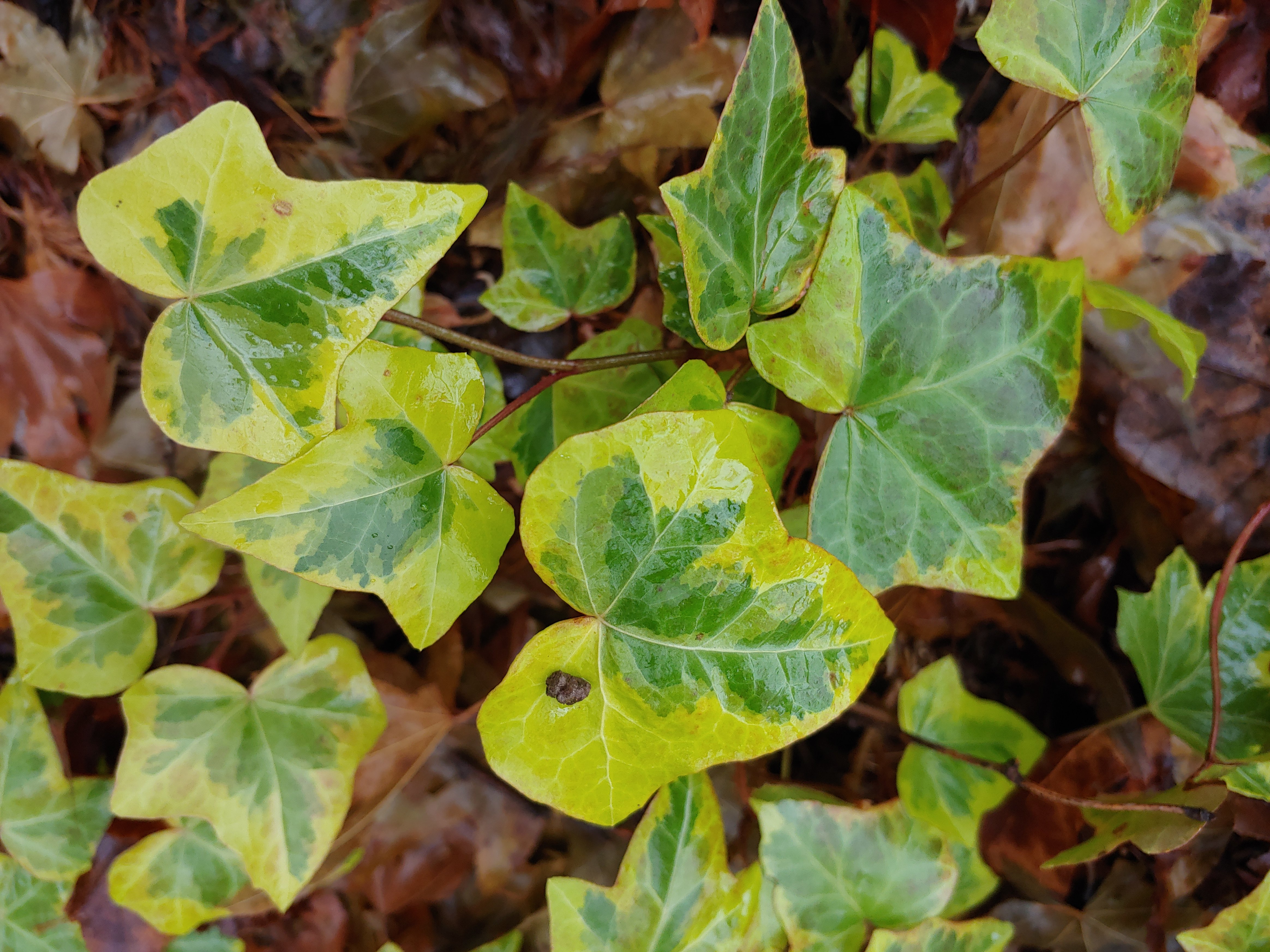The yellow leafed periwinkles (Vinca minor, below) have long turned to green. It is new leaves that are brightly colored, a splendid contrast to lavender blue blooms. As these colors fade in the summer’s heat, hostas and Japanese Forest grass provide the color, but of course these have all withered by early December.
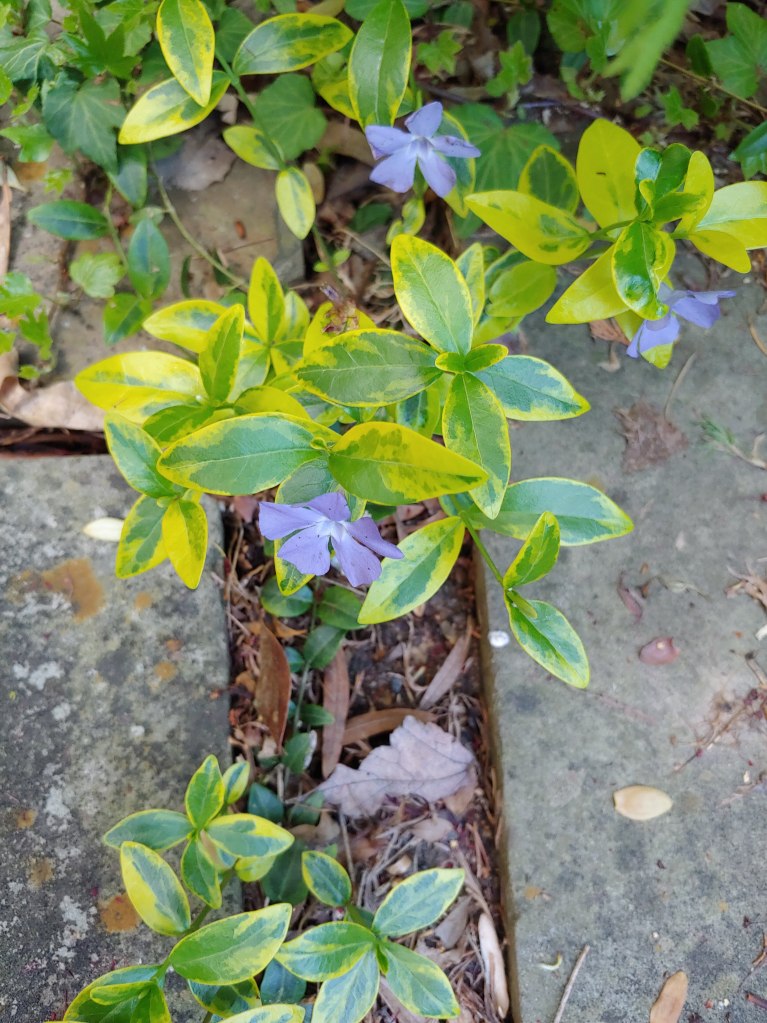
The yellow periwinkles are not a named selection, but mutations from a small patch that is green leafed. There are enough of the mutants that the yellow leafed patch is now the equal of the green. I’ve witnessed periwinkle that has escaped cultivation into nearby forests, so I would hesitate to plant it today, but it would be weeded out of the garden with great difficulty.

While some colors fade as the year progresses, coloring of several evergreens becomes more vivid in cooler temperatures. While a gold tipped Hinoki cypress peaks with a spring flush of growth, the golden Fernspray cypress (Chamaecyparis obtusa ‘Fernspray Gold’, above) brightens in cooler temperatures, holding this color until summer heat again dulls its short needles.
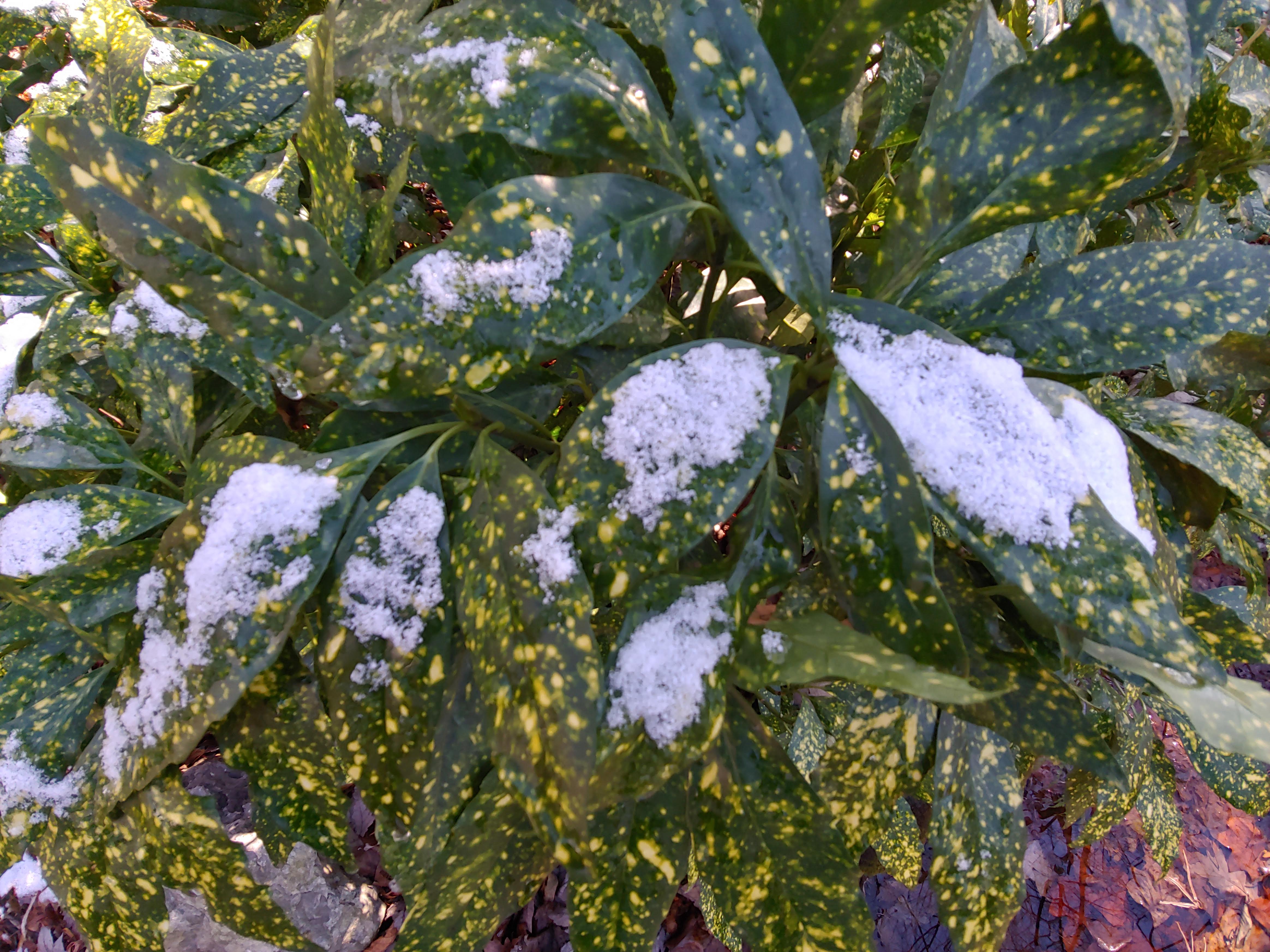
I am undecided if the gold spotted Japanese aucubas (Aucuba japonica ‘Gold Dust’ and others) are more or less colorful in winter. Some are more brilliant, others less, with no discernable pattern, though I’m certain there’s an explanation. There are several cultivars of spotted aucubas in the garden, with little enough difference that I haven’t bothered to remember which is which. All are exceptional, in particular in the winter months, though they must be protected with a repellent to ward off deer during this period when there is little available foliage. Deer do not bother them otherwise.
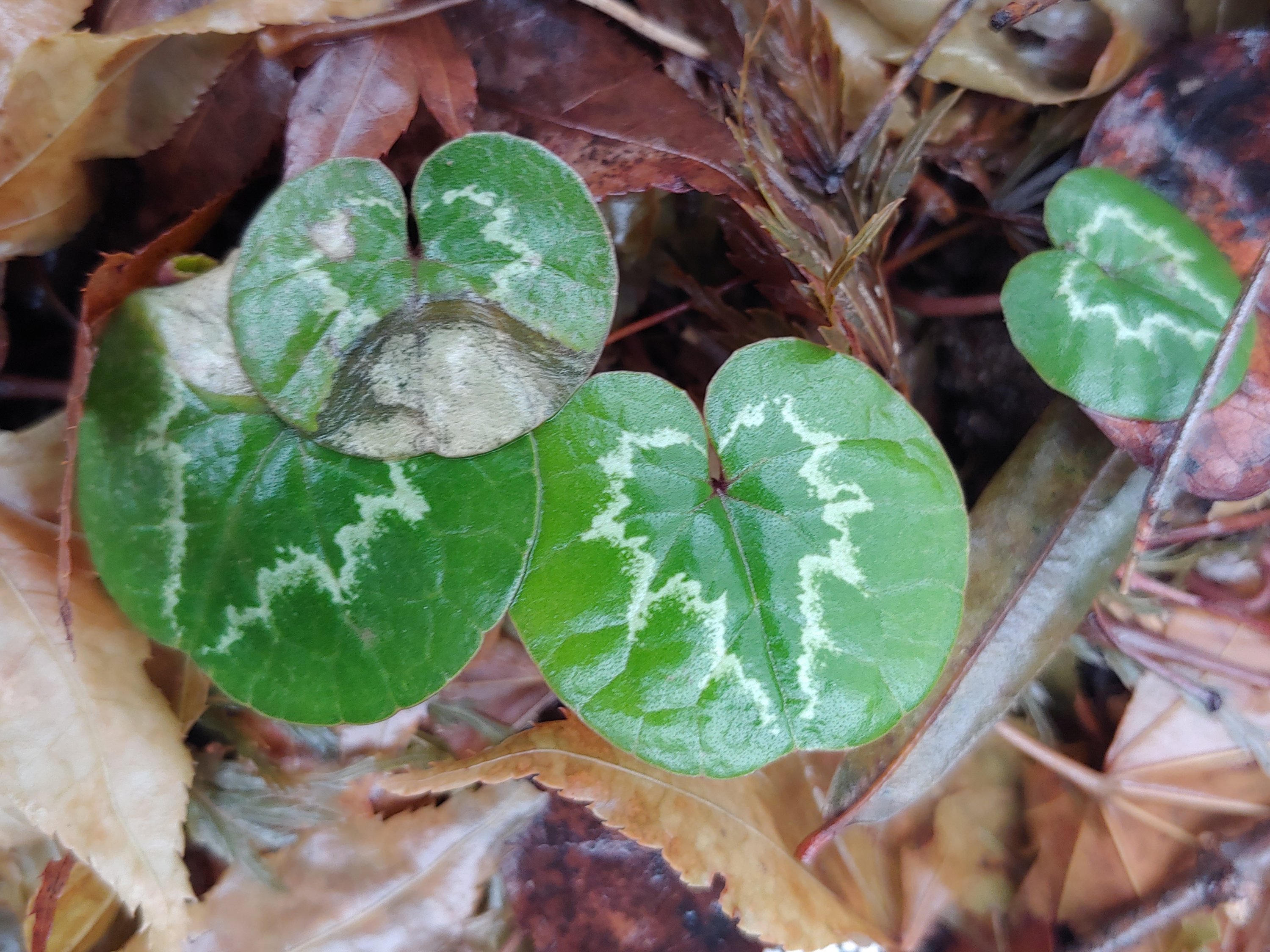
After a small patch of cyclamen was overwhelmed by a vigorous but mistaken planting of ‘Evergold’ carex, done while the cyclamen was dormant and forgotten, I was shamed into planting more (above and below). This was a mixed bag, a bargain, but it will be some time to identify what is there. I am uncertain that any are ideally placed, but all seem to be off to a good start, and for whenever they flower, the foliage is of great interest.
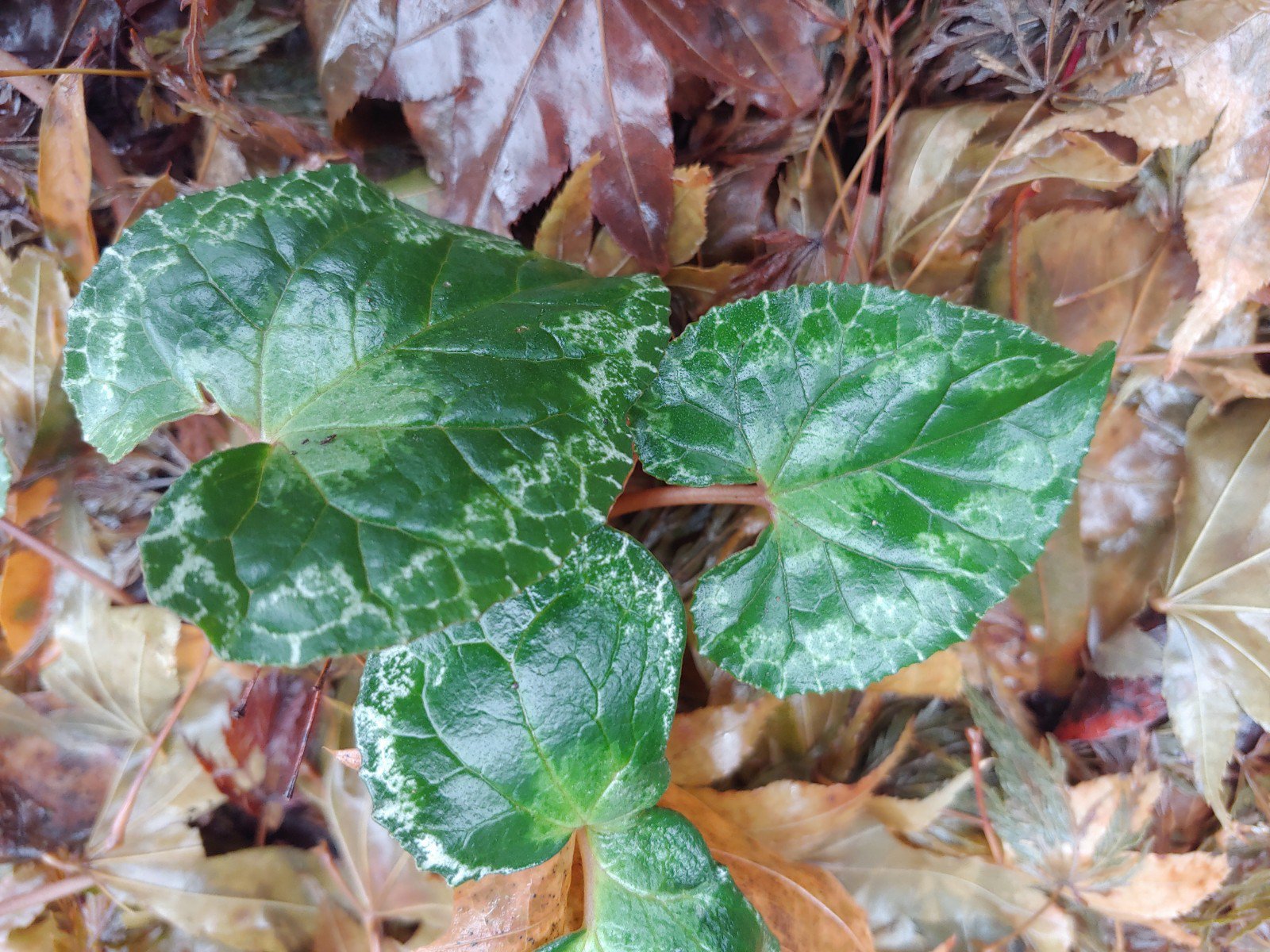
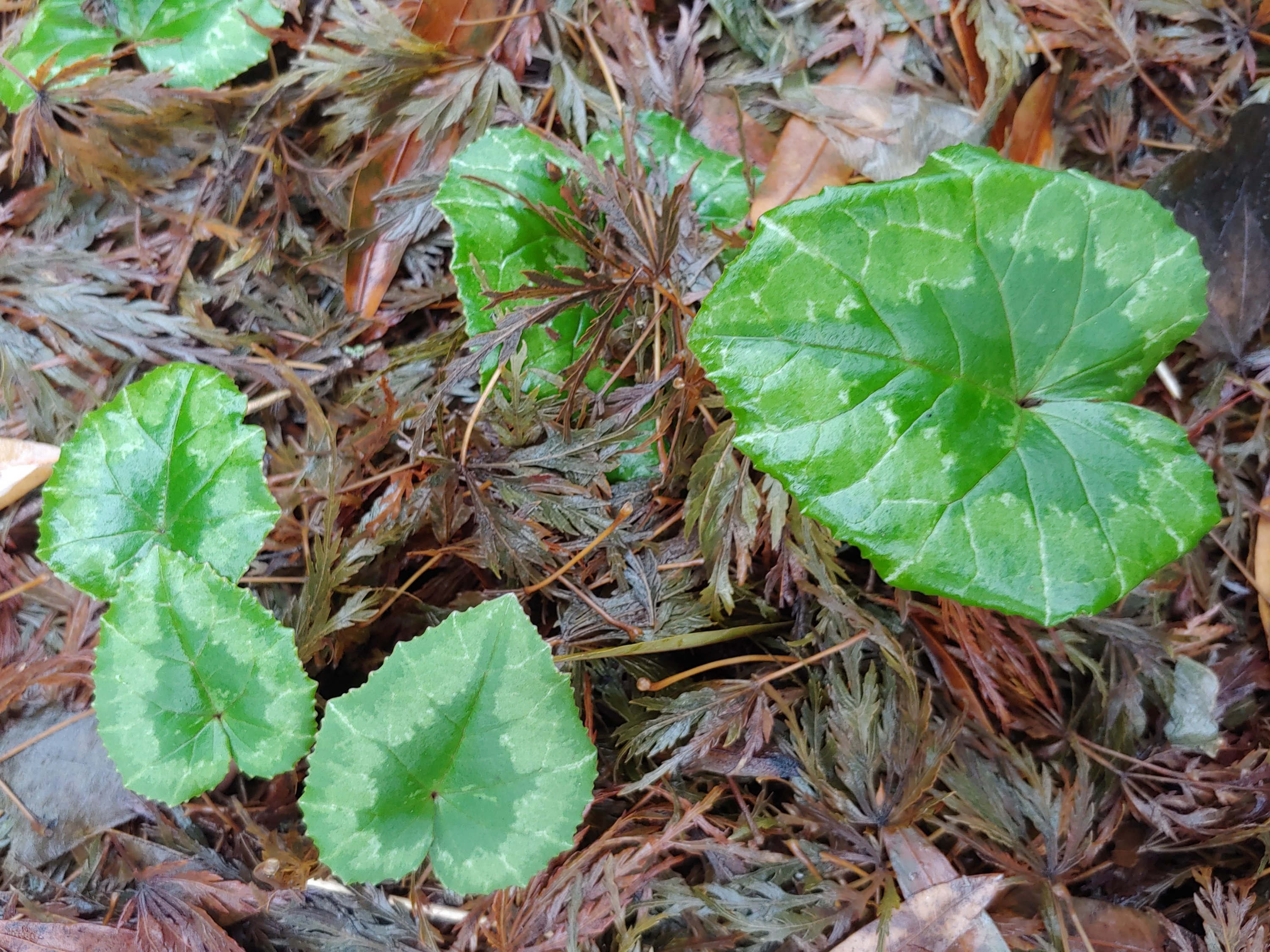
While the yellow leafed periwinkle has long faded, at least one of the gold variegated ivies is now more colorful (below). Others are heavily shaded, but one in moderate shade shines in December. This attracts little attention through other times of the year, and the variegated ivies rarely demand chopping back that their green leafed cousins require.
